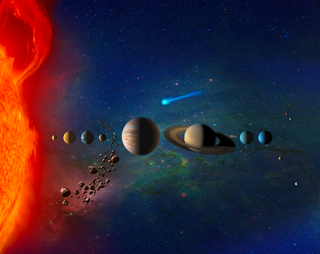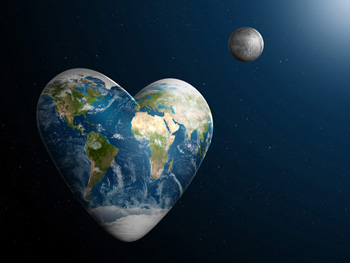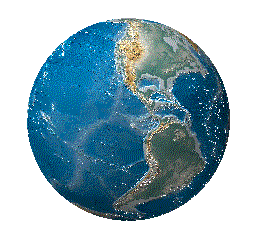COSMIC SECRETS, PART 5
CLASSICAL (NEWTONIAN) MECHANICS: THE OLD MACROSCOPIC (EXTREMELY LARGE) OR CELESTIAL VIEW OF MATTER AND EXISTENCE
In his podcast on the history of physical science, and as demonstrated in the first video below, Derek Owens sketches a timeline of how physical science developed over three distinctive periods of time. For purposes of this discussion, I will list them as four distinctive periods:
- The Ancient Period (500 BC to 500 AD)
- The Middle Ages Period (500 AD to 1700 AD)
- The Industrial Period (1700 AD to 1900 AD)
- The Modern Period (1900 AD to Present)
As the 19th century came to a close (that is, on December 31, 1899) and as the 20th century began (that is, on January 1, 1900), scientists thought that they conclusively had figured out how matter works—and, for the most part, they had succeeded at figuring out how matter works at the macroscopic or celestial level of existence. Based on the classical physical scientific perspective, it is possible to compute with great precision both the momentum and location of, say, an artificial satellite as it orbits the Earth, or the momentum and location of Earth as it orbits the Sun. The next image and the next two videos represent demonstrations of the classical physical scientific perspective.
Celestial Mechanics: The Solar System

Perhaps one of the most prominent and impactful applications of celestial (hence, Newtonian) mechanics—also known as classical physics—in everyday life is the launching of rockets into outer space and the launching of artificial satellites into orbit around Earth. Newtonian mechanics means that this particular physical scientific view is based on the work of Sir Isaac Newton (born 1642 and died 1727) and his laws of motion and his law of universal gravitation.
In much the same manner as Sir Isaac Newton's scholarly achievements applied to the celestial world, initially, many scientists believed that Sir Isaac Newton's scholarly achievements also applied to the atomic world. For instance, initially, it was believed that the electron moved around the atom's nucleus in a fixed orbit much like a planet moves around the Sun in a fixed orbit. But, the advent of the 20th century brought with it a plethora of scientific surprises and breakthroughs. For instance, just when the 19th century scientists thought that they had figured out how matter works (hence, a basic foundation of existence), along comes a new crop of 20th century scientists to say, "not so fast." It turns out that a bit of randomness or uncertainty exists at the atomic level of existence. For, contrary to the macroscopic or celestial level of existence, it turns out that a precision of measurement does not exist at the microscopic or atomic level of existence.
QUANTUM MECHANICS: A NEW MICROSCOPIC (EXTREMELY SMALL) OR ATOMIC VIEW OF MATTER AND EXISTENCE
Eminent scientists such as Austrian physicist Erwin Schrodinger (born in 1887 and died in 1961) and German physicist Werner K. Heisenberg (born in 1901 and died in 1976) were distinguished among this new crop of 20th century scientists. They made enormous contributions to the development of a new field of scientific study to explain how matter behaves at the atomic level. The new field of scientific study came to be called quantum physics.
Quantum Mechanics: The Atom

To describe the probabilistic manner in which matter behaves at the atomic level, in 1926, Erwin Schrodinger devised what has come to be referred to as the Schrodinger wave equation. It is far beyond my capacity to illustrate the Schrodinger wave equation, but the next video gives a hint as to the meaning of the Schrodinger wave equation.
Werner K. Heisenberg demonstrated to humans that while Sir Isaac Newton's mathematical constructs provide accurate descriptions of how matter behaves at the macroscopic or celestial level, these mathematical constructs did not provide accurate descriptions of how matter behaves at the microscopic or atomic level. To describe the uncertain nature of matter at the atomic level, in 1927, Werner Heisenberg devised what has come to be known as the Uncertainty Principle. The Uncertainty Principle states that is not possible to measure both the location and momentum of atomic phenomena simultaneously with precision and certainty. As a result, scientists were left to compute the probabilistic momentum and location of atomic phenomena, say, the electron as it moves about the atom's nucleus. The Uncertainty Principle states that the more precisely you know the location of the electron, then more unlikely you are to know its momentum. Conversely, the more precisely you know the momentum of the electron, then the less likely you are to know its location. The next two videos provide hints as to the meaning of Werner K. Heisenberg's Uncertainty Principle.
The reader should note that neither Erwin Schrodinger nor Werner K. Heisenberg derived their mathematical constructs in a vaccum or in isolation. In addition to their experiments and educational training, Erwin Schrodinger and Werner K. Heisenberg relied on the findings of their scientific predecessors and peers such as Max Planck (born 1858 and died 1947), Albert Einstein (born 1879 and died 1955), Louis de Broglie (born 1892 and died 1987), and Niels Bohr (born 1885 and died 1962).
Perhaps two of the most prominent and impactful applications of quantum mechanics in everyday life are (1) the generation of nuclear power and (2) the use of the semiconductor as an essential component inside almost all computing devices.
Albert Einstein spent the latter part of his life attempting—and, to this day, some physicists continue to attempt—to reconcile the precise mathematical description of how matter behaves at the macroscopic or celestial level to the probabilistic mathematical description of how matter behaves at the microscopic or atomic level. So far, as of 2016, scientists have not succeeded at mathematically unifying the two opposing mathematical descriptions of how matter behaves.
LOOKING BACK AND TAKING STOCK
The final bloc of videos below is meant to take a brief look back and marvel at Earth's illustrious yet turbulent history. This final bloc of videos is meant for humans to take stock of the fact that they really ought to strive to live constructively, positively, and harmoniously during their brief life spans on Earth.
Humans already possess a form of Heaven right here on Earth. That is to say, when compared to the other heavenly bodies throughout the Solar System, the fact that life exists at all on Earth is truly miraculous, precious, unique, and something worth cherishing and preserving. There is no reason whatsoever for humans to wake up each day on beautiful planet Earth and proceed to engage in ugly acts of hatred, violence, bloodshed, murder, and so forth. Why must it be so difficult for humans—and nations—to treat one another with courtesy and respect? Why must it be so difficult for humans—and nations—to conduct themselves in a civil manner? Why must it be so difficult for humans—and nations—to live in peace? Without a doubt, the realities of race, religion, politics, cultural differences, socioeconomic differences, and so forth, play pivotal roles in fostering the human divide.
The time has come for humans—and nations—to permanently shift their mind-sets into a higher, better, and more positive mode of daily living. As I stated on the "Memo to Humans" page of this website, life is good, death is bad, and murder is wrong. From the perspective of the broader Universe, humans are stuck on Earth in the cosmic void, essentially, in the middle of nowhere. Humans may as well make the most of their brief life spans on lonely planet Earth rather than plundering Earth and hating and killing one another to the point of human extinction.
As I outlined on the "Cosmic Secrets, Part 2" page of this website, there are lots of ways for the human species to go extinct. It would be both unwise and foolish of humans if they were to become the cause of their own extinction.
There is absolutely no reason at all why humans cannot enjoy a Heaven-like existence on Earth right here and now. To realize a state of Heaven on Earth for the living to enjoy each day might not turn out to be as difficult of a feat to accomplish as imagined. However, humans would need to re-wire their brains to think differently about one another and to think differently about the planet on which they live. Humans would need to adopt a holistic, a global, and even a cosmic perspective towards life. Humans universally would need to establish the will to transform Earth into their own unique form of Heaven. Humans universally would need to embrace education and abandon ignorance as they move onto the same page of human relations. It is vitally important to human survival that they not lose sight of the fact that there is only one Earth, one atmosphere, and one human species. Human must learn to temper their behavior accordingly, for as the dinosaurs before them very vividly illustrated, tomorrow is not guaranteed to anyone.


FLATTER THIS SITE:

SEARCH THIS SITE:
Intellectual Property Disclosures: All videos and songs (as well as many of the images) referenced or spotlighted throughout this website are the legal and intellectual properties of others. All content and opinions on this website (bruessard.com) are those of the author (Edward Bruessard) exclusively and do not necessarily reflect the opinions of the contributors, creators, owners, and distributors of these referenced videos, songs, and images. The author holds no legal interest or financial stake in any of these referenced videos, songs, and images. The contributors, creators, owners, and distributors of these referenced videos, songs, and images played no role at all regarding the appearance of said videos, songs, and images throughout this website; they had no clue that this website would be spotlighting their works.


